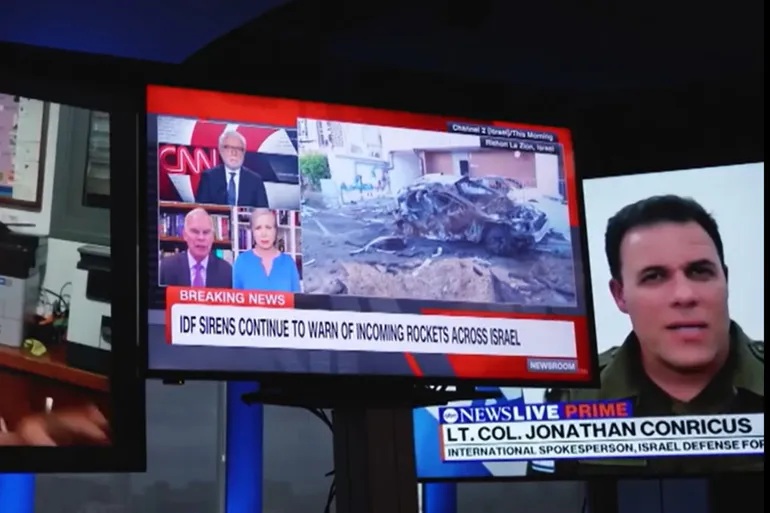Patrick Gathara
It has been more than two weeks now since another war in Gaza started. More than 6,500 Palestinians have been killed by relentless Israeli bombardment and 1,400 Israelis died in the attack by the armed Palestinian resistance group Hamas on southern Israel. Watching the media coverage of these events, I have been struck by the stark difference between how the killing of civilians has been covered on both sides.
Many Western media outlets insist on highlighting the immorality of killing and brutalising Israeli civilians, as Hamas has undoubtedly done, while soft-pedalling the immorality of the Israeli military’s indiscriminate killing of Palestinian civilians by carpet bombing the Gaza Strip. In one remarkable interview on BBC Newsnight, when Husam Zomlot, the Head of the Palestinian Mission to the UK, said that seven members of his family had been killed by Israeli bombs, the reaction of his interviewer was to offer perfunctory condolences and immediately proclaim that “you cannot condone the killing of civilians in Israel”.
Zomlot had not offered his personal tragedy as justification for Hamas atrocities but as an answer to a direct question about what happened to them. Yet having done so, he now found himself being asked to condemn, not those who murdered them, but those who killed others. It is worth noting that in all the interviews I watched of Israelis who had similarly lost loved ones, I have not come across a single one where the victims have been asked whether they condoned the actions of their government or disavowed the labelling of Palestinians by the Israeli defence minister, Yoav Gallant, as “human animals”. None have been asked to condemn what some are controversially describing as an unfolding genocide and the expulsion of civilians in Gaza.
“We are preconditioned not to see Palestinian humanity because colonialism, white supremacy, and Islamophobia are still the dominant lens through which states, institutions, people, and media in the West view the world (although geopolitical interests are, of course, also at play),” editorialises The New Humanitarian, contrasting the glorification of Ukrainian resistance to the Russian invasion with the delegitimisation of Palestinian struggle against invasion, dispossession and ethnic cleansing. Few outlets have bothered to ask how over two million people came to be packed into a tiny strip or discuss the 16-year blockade that has turned the territory into what is widely acknowledged as an open-air prison.
These inadequacies and distortions in the media coverage of the war in Gaza reflect a reality that is often obfuscated by claims of “journalistic objectivity”. The truth is, journalists’ discretion over what is fit to publish has never been absolute; it has always been circumscribed by the values and culture of the society in which they operate. The late American media ethicist, John Calhoun Merrill, asserted that “a nation’s journalism cannot exceed the limits permitted by the society; on the other hand, it cannot lag very far behind”.
Recognising how culture interacts with journalism is the key to understanding these biases, many of which are rooted in history. What we are seeing in the coverage of the war in Gaza is, in the first instance, a demonstration of the largely unacknowledged societal limits imposed on journalism. There is obvious censorship. Opinions that humanise Palestinians or that deviate from the official line of unconditional support for Israel have been suppressed. There have been clampdowns on protests and expressions of solidarity with the Palestinians, threats to arrest people for flying the Palestinian flag, and attempts by Big Tech companies to remove or shadow-ban pro-Palestinian content. A report by Al Jazeera’s Listening Post programme suggested that editors in US newsrooms were discouraging any attempts to provide background context to the Hamas attacks as that would be unpalatable to audiences.
However, censorship is not a sufficient explanation. As Merrill said, the journalism “cannot lag very far behind” the society. Journalism ethics and the moral principles and values that inform them do not belong to journalists alone. Rather they are reflections of society-wide expectations from the media. In essence, the reporting on Israel and Gaza tells us more about the journalists themselves and the cultures they spring from, than about the events in the region. Historically, anti-Semitism and Islamophobia have been a well-documented feature of Western cultural thought. Jews were once racialised and othered in much the same way Muslims are today, routinely subjected to pogroms. In the aftermath of the horrors of the Holocaust, however, anti-Semitism was widely denounced in Western culture as unacceptable and abhorrent.
By contrast, anti-Arab and Islamophobic sentiments in the West were never censured in the same way. Over the past few decades, they have been further fuelled by the US-led “war on terror”, which Israel has used to frame its own conflict with the Palestinians. In this context, it is not surprising that many Westerners seem to believe that acknowledging the humanity of Jews has to go hand-in-hand with the dehumanisation of those coded as Muslims or Arabs (the categories are almost always conflated in the Western imagination). The insistence on Israel’s “right” to defend itself even in the face of undeniable atrocities that date back to its establishment reflects the Western perception that Arab civilian deaths are an acceptable price for Israeli security and peace of mind.
By contrast, even an attempt to mention the context in which Israeli civilian deaths occurred is considered an outrageous move – as the UN Secretary-General Antonio Guterres himself has recently discovered. Western media reports reflect this awful cultural calculus – the one-sided demand for condemnation, the individualisation and humanisation of the Israeli tragedy are juxtaposed next to the representation of Palestinian tragedy in passive language and as suffered by undifferentiated masses. The calculus is also apparent in the imagery of death. Social media and TV reports are inundated with graphic images of Palestinian dead but relatively few images of dead Israelis. Words and descriptions such as “beheaded babies” are presumed sufficient to articulate the horror of Israeli death. The horror of Palestinian death, however, needs to be established with gory imagery.
Audiences are constantly reminded that Hamas has been designated a terrorist organisation by Western governments, but not that human rights groups and the UN have described Israel as an apartheid regime. Criticism of Israeli actions, or even the attempt to humanise their victims, are coded as expressions of anti-Semitism, which carries a far heavier cultural penalty than anti-Arab sentiment. That said, it is important to keep in mind that culture is itself a collectivising and muddy concept and it should not be assumed that cultural concepts are held or accepted by everyone who identifies as part of the culture.
The huge demonstrations in support of Palestinians that are happening in Europe and North America are an example of this. The point though is that culture does influence media attitudes, ethics and framing as well as limits on what journalists can do. Media practitioners need to take cognisance of the facts and rethink ethics and professional practices forged in days when journalists reported the news largely to audiences who looked like and thought like them. Today, when news reports are instantly broadcast around the world, cultural blindspots can manifest as unethical practices, including as justification for genocide and ethnic cleansing. They should listen to and take seriously the repeated complaints about their reporting and framing. That requires a degree of self-awareness that sadly, many have so far failed to demonstrate.
Aljazeera







